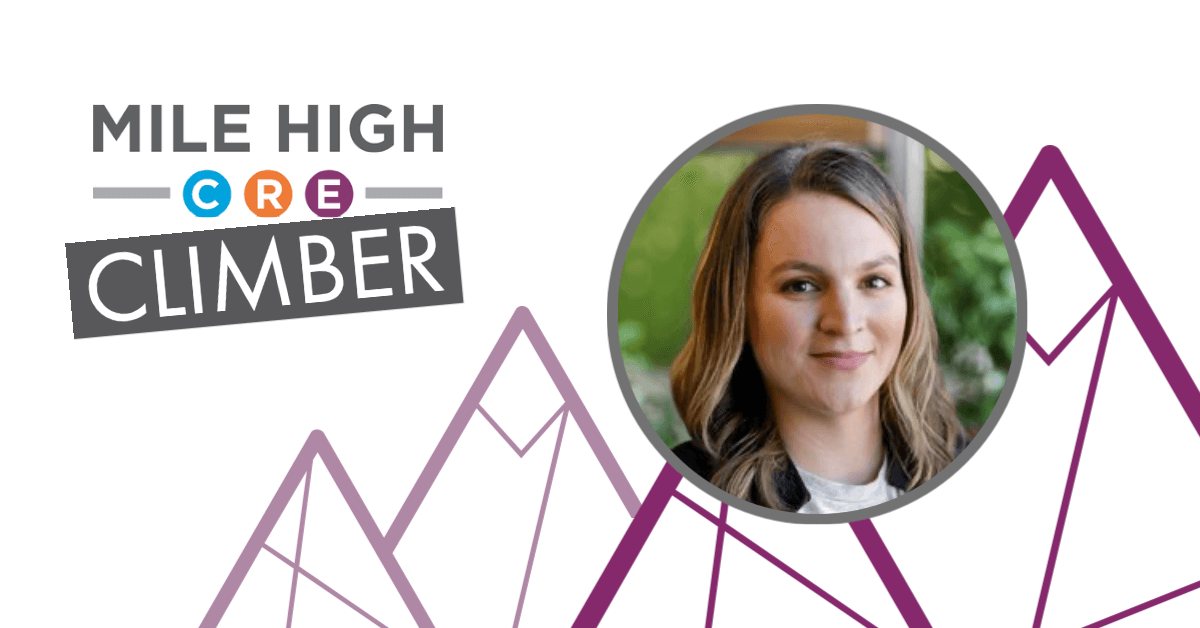Mile High CRE is excited to announce that August’s Mile High Climber is Sara Bonacquist, associate with Design Workshop. Mile High Climbers are industry professionals who are new to their field or are in the early years of the profession. They innovate, inspire, collaborate, and take risks. They are future leaders and change-makers, and they all have one thing in common, they deserve to be celebrated.
Based in Design Workshop’s Denver office, Sara is a landscape architect with over six years of design and planning experience in projects ranging from parks and new communities to mixed-use housing and campuses. Her design approach merges place-based, imaginative concepts with precise detailing. Focusing on the realities and constraints of space, she loves reconciling how a design on a piece of paper manifests itself in the real world.
How did you start your career in the industry?
In school, I was always interested in the STEM classes—but I was also very into art. I thought eventually I would have to pick between the two. Then I started looking into architecture and realized I may not have to make that choice. I loved the way it tied up all my loose ends—engineering, art, history, culture, community, etc. So as someone who loves the outdoors, when I found out about landscape architecture, which was all of those things in the context of public space and the environment…it sounded perfect. My mom was actually the one who told me about it, then we found schools with LA programs and went from there!
How many years have you been in the industry?
7 years
What have been some of your favorite/proudest projects or career accomplishments?
I feel pretty lucky to be in the field of landscape architecture. I think there is a lot of power in the design of the built environment. A lot of times, the catalyst for economic and community development is the design of a new streetscape, a park, or a public square or plaza. I worked on a project in a community that had been devastated by flooding due to increased rain events and aging infrastructure. We worked with them to completely redesign their main street above and below ground by collecting and treating stormwater on-site before it inundated the sewer system. Not only did it alleviate their infrastructure pressures, but it gave green space back to the public realm and generated new energy for the local businesses and residents.
What have been some of the biggest challenges in your career and how did you overcome them?
One of the best things about this profession is you’re never doing the same thing every day. Some days you’re in the office working on technical construction drawings; some days you’re out engaging with the community; other days are spent in the field on project trips and construction visits. You also get to work on a bunch of different projects at once. While it’s one of my favorite things about this work, it can be a lot to juggle, and if you don’t stay organized it can fall apart quickly! Over the years I’ve learned how to balance a lot of moving parts and know there’s more to learn yet.
What advice do you have for an emerging AEC/CRE professional?
Believe in yourself and advocate for yourself! Sometimes I think about opportunities I missed out on because I was too worried or afraid I wasn’t good enough. I hope emerging professionals, especially young women, go for what they want even if there is a chance it won’t work out, because you never know what will happen when you put yourself out there!
What are some of your goals for the future?
I’d really like to bring more awareness to landscape architecture as a whole, but especially to schools so kids know it’s even a career option for them. In the past, I’ve participated in the CAL (Cleworth Architectural Legacy) Program that brings architecture into K-8 classrooms in Denver through a multi-week curriculum. We were able to teach kids about the many career paths in the AEC world. In the future, I’d like to work toward developing a landscape architecture and urban planning-specific program that reaches a broad and diverse spectrum of students. The built environment is for everyone and should reflect that!
What trade associations or non-profits have you actively been involved with throughout your career?
I’ve been involved with the American Society of Landscape Architects (ASLA) Colorado-Wyoming Chapter for the last four years, focusing mostly on providing educational programming and networking events for our members. I’ve also been on the board of a farmer’s market whose mission was to bring sustainable and local food to its region.









